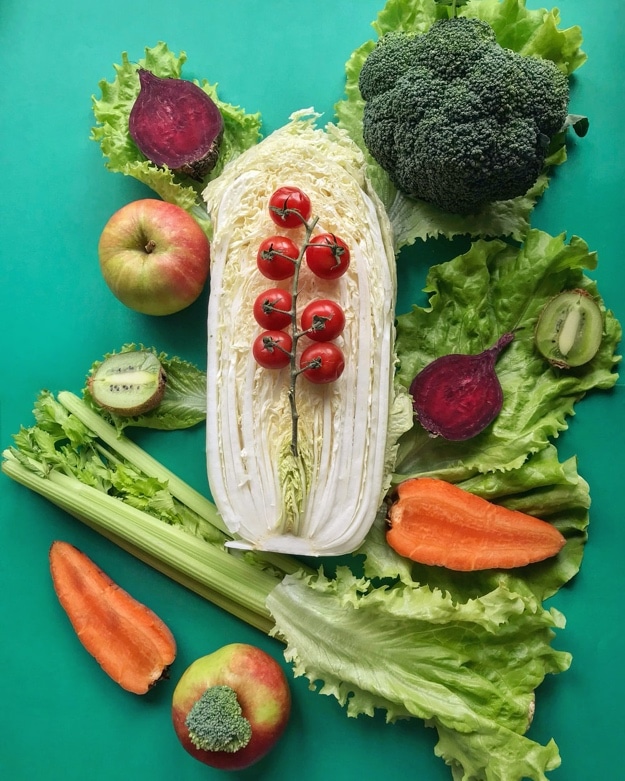Your Low FODMAP Shopping List – A Step by Step Guide to Shopping on the Low FODMAP Diet
Posted on September 30, 2020

Embarking on a low FODMAP diet often begins with an overhaul of your grocery shopping experience, where much more attention must be paid to food labels and ingredients. Although this can initially be daunting, at FODMAP Friendly we are here to help you shop with confidence! Today on the blog, we’ll give a brief overview of what commencing a low FODMAP diet looks like and the common struggles associated with this change. We’ll then take it back to basics by looking at commonly consumed high FODMAP products and what their suitable low FODMAP swaps are.
What does commencing the low FODMAP diet involve?
The goal of a low FODMAP diet is not to cure IBS, but to identify which FODMAP groups are involved in triggering or exacerbating IBS symptoms and use this information to develop a personalised eating plan that ensures as much variety and as little symptoms as possible.
The diet is a diagnostic tool, not a forever diet! In fact, many FODMAPs are prebiotics and have a positive effect on our gut health and should not be eliminated unnecessarily in the long term. The Low FODMAP diet commonly involves three-phases: elimination, reintroduction/challenging FODMAPs and maintenance/individualisation. For an in-depth overview of these three phases, check out our FODMAP Friendly 101 blog post.
For the purpose of our low FODMAP shopping list, we will focus on the elimination phase. Elimination is the trial phase of the low FODMAP diet that removes all FODMAP groups, even if you think they are well tolerated. The purpose of this phase is to determine whether removing FODMAPs makes a significant difference to symptoms. This step usually lasts around two to four weeks.
The commonly experienced struggles of beginning a low FODMAP diet
Done properly, the low FODMAP diet involves some ‘short term pain for long term pain relief’. Although the low FODMAP diet works to reduce physical discomfort, there can be a fair amount of ‘pain’ and stress involved in wrapping your head around the diet and its many complexities.
Following a low FODMAP diet is initially time consuming – you’ll find that your first trip to the supermarket is not exactly a case of whipping in and out of the aisles, and this may feel tedious at times. For those who are embarking on a low FODMAP diet while caring for a family, it is valid to feel frustrated by the two different meals you may have to prepare at times. Even Dietitians who studied nutrition at university for five years can find the low FODMAP diet difficult to wrap their heads around initially, so feeling like you lack the knowledge required to undergo a low FODMAP diet is completely normal.
The most common struggle we hear from our community is not knowing what to eat in the first place. However, we are here to help with this pain point!
Taking it back to basics – beginning the low FODMAP diet
At its core, beginning the low FODMAP diet involves swapping high FODMAP foods you may eat with alternatives low in FODMAPs. While making this swap, track your symptoms to determine whether removing these high FODMAP foods are making a significant difference.
The FODMAP Friendly accreditation is the only registered certification trademark worldwide certifying FODMAP levels in food products that have been laboratory tested to be low in FODMAPs. Levels of FODMAPs in food vary depending on the portion size and the way the food is processed. Therefore, it can often be tricky to read food labels to work out if a food is low FODMAP. Many food companies are now registering their products for FODMAP Friendly accreditation. If you see the green FODMAP Friendly logo on any food product, you have the ‘green light’ and can be rest assured that product is suitable for consumption while following a low FODMAP diet at the packet serve size!
Let’s go through a range of commonly consumed high FODMAP products and look at the suitable low FODMAP swaps. This information will be greatly useful when you compose your first low FODMAP shopping list.
Swapping high FODMAP grains for low FODMAP grains
When it comes to grains on the low FODMAP diet, the aim is to limit your consumption of fructans and oligosaccharides (the ‘O’ in FODMAP). Fructans and oligosaccharides are found in grains such as wheat bread, wheat pasta and wholemeal bread.
The good news is that you have an abundance of low FODMAP grains to choose from! Low FODMAP grains include gluten free bread, spelt sourdough bread, corn tortillas, plain crackers, corn flakes, millet, rolled oats, rice cakes and rice crackers. Always be mindful that not all gluten free products are low in FODMAPs, so it is important to double check the ingredient panel. Again, refer to your FODMAP Friendly app for important serve size information.
There are a number of FODMAP Friendly certified grain products on the market. These include:
Alpine Breads – spelt & barley, sour rye, spelt & sprouted grains, hemp sourdough loaves
Uncle Toby’s – rolled oats
Food for Health – simply fibre, nutty almond fruit free clusters, chia & cinnamon, vanilla & teff muesli
White Wings – gluten free plain flour, self-raising flour
Lo-Fo – plain flour, bread flour, baking
Orgran – buckwheat penne, buckwheat spirals, buckwheat wafer crackers, chocolate brownie mix, corn crispbread, lasagne mini sheets, quinoa spirals, rice & corn macaroni
Swapping high FODMAP dairy for low FODMAP dairy
Lactose is a carbohydrate naturally present in milk. It is also a disaccharide (the ‘D’ in FODMAP) and is a commonly malabsorbed sugar in those with IBS. A common misconception of the low FODMAP diet is that all dairy products must be completely eliminated. That is not the case! While lactose should be limited, low FODMAPPERs can still enjoy dairy through a range of low FODMAP lactose free dairy products.
While lactose should be limited on a low FODMAP diet, lactose-free dairy is a fantastic source of calcium and protein. Feel free to consume lactose free milk, yoghurt and ice cream. You can use these products just as you would regular dairy – with cereal, in coffee or as a liquid for smoothies.
A range of certified dairy products exist on the market, including:
Liddells – full cream milk, cream cheese, shredded cheese, Colby cheese, strawberry yoghurt, plain yoghurt, skim milk, low fat milk – all lactose free
Cocofrio – dairy-free and gluten-free ice cream
Swapping high FODMAP fruits for low FODMAP alternatives
In fruits, the main FODMAP of concern is fructose (a monosaccharide, the ‘M’ in FODMAP) and polyols (the ‘P’ in FODMAP). High FODMAP fruits include apples, apricots, cherries, peaches and watermelon.
However, there are a range of low FODMAP fruits on offer! These include but are not limited to firm bananas, blueberries, dragon fruit, kiwifruit, oranges, mandarins, pineapple, raspberries and strawberries.
Here are some ideas:
Swap ripe bananas for firm bananas: although ripe bananas are high in fructans, firm bananas are not. You can pop these bananas in your low FODMAP smoothies, porridge, muesli or even just with some almond butter for a snack.
Swap cherries for strawberries: cherries often feature in festive desserts, but strawberries are a low FODMAP, equally as cheerful alternative.
Swap nectarines for oranges: if you are craving a slightly sour fruit, although nectarines are high in FODMAPs, one medium orange is an easy swap.
Swap high FODMAP vegetables for low FODMAP vegetables
The main high FODMAP vegetables of concern are onion and garlic. Here are some delicious alternatives to these flavourful vegetables:
Swap onion for the green tips of spring onion or leek: although the white part of these vegetables are high in fructans like onion, the dark green tips are not! You can fry these tips just as you would fry onion and they can add delicious flavour to a dish.
Swap onion for chives: chives are an underutilised vegetable in the low FODMAP world. They look similar to spring onion and can be used in dishes to give a mild onion & garlic taste. You can purchase chives fresh or dried.
Swap garlic for garlic infused olive oil: because fructans are water soluble rather than oil soluble, garlic infused olive oil is a great way to get delicious garlic flavour in your meals without the FODMAP load.
Innovative companies have made some great low FODMAP vegetable alternatives:
Free FOD – onion and garlic replacer
Cobram Estate – a range of infused olive oils, including oils infused with garlic & roasted onion.
Swap high FODMAP nuts for low FODMAP nuts
Nuts make delicious, satiating snacks on the low FODMAP diet. High FODMAP nuts include almonds (over 10), cashews and pistachios. There are a range of low FODMAP nuts to choose from – including, brazil nuts, chestnuts, peanuts, pecans, macadamia nuts and pine nuts.
Swap high FODMAP syrups for low FODMAP syrups
Syrups such as honey, agave nectar and molasses are considered high in FODMAPs and should be limited. However, there are a range of low FODMAP syrups on the market, including maple syrup, rice malt syrup and glucose syrup. Serve size is especially important when it comes to syrups. Remember, even with low FODMAP syrups, a serve may be one tablespoon and anything more than this could cause symptoms. Be sure to consult your FODMAP Friendly app for more information.
Wrapping it up
Here at FODMAP Friendly, our aim is to help you shop with confidence and address the commonly experienced struggles so you can sustainably follow a low FODMAP diet. You can browse the extensive range of certified FODMAP Friendly products here and be sure to look out for our logo next time you’re at the supermarket.
A FODMAP-specialised Dietitian is a great person to have on your IBS management team. They will be able to answer all of your FODMAP questions, and help you choose the best course of action when it comes to the way in which you’d like to implement the diet. If you are daunted by the prospect of beginning a low FODMAP diet, seeking assistance from a professional can be a great place to start.
Written by: Charlotte Barber (Student Nutritionist)
Reviewed by: Kiarra Martindale (Accredited Practising Dietitian)












